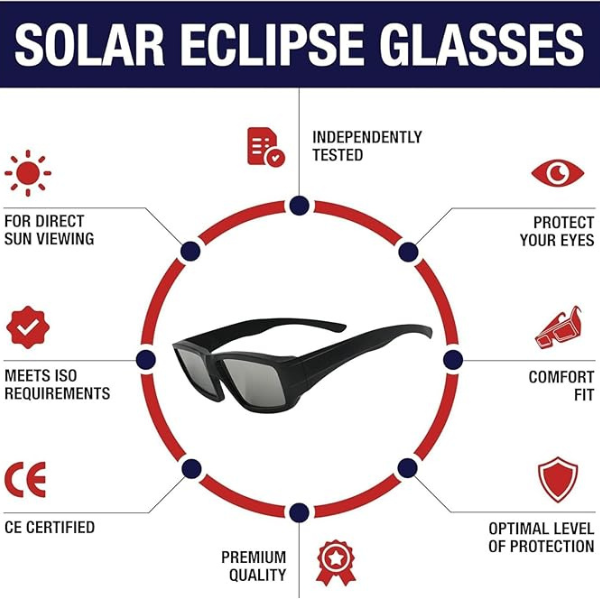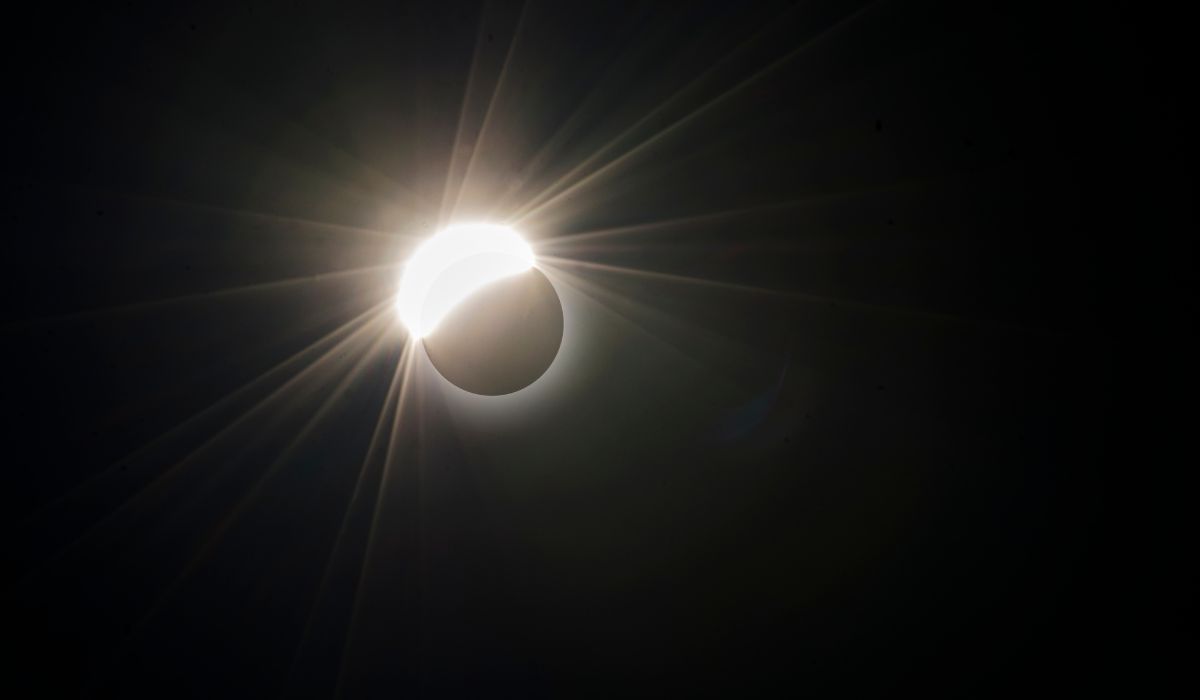1. ISO 12312-2 Certification:
The ISO 12312-2 or ISO 12312-2:2015 certification mark is your first line of defence when it comes to identifying safe solar eclipse glasses. This certification indicates that the glasses have been tested and meet the international safety standard for filters used in direct observation of the sun. Always look for this mark before purchasing or using solar eclipse glasses.
2. Manufacturer's Information:
Reputable manufacturers take pride in producing high-quality solar eclipse glasses that meet safety standards. Before purchasing a pair of glasses, check for the manufacturer's information on the packaging or product label. Established manufacturers will provide details about the safety standards and compliance of their products. Check if the solar eclipse glasses come with usage instructions provided by the manufacturer. These instructions typically include guidelines on how to properly wear and use the glasses to ensure safe viewing of the sun. Follow these instructions meticulously to maximize safety.
3. Lens Quality:
Inspect the lenses of the solar eclipse glasses for any signs of damage, such as scratches, wrinkles, or dents. Even minor imperfections can compromise the glasses' ability to filter out harmful solar radiation. Ensure that the lenses are in pristine condition before using them to view the sun. Pinholes, scratches, or punctures in the lenses of solar eclipse glasses can allow dangerous levels of sunlight to enter your eyes, leading to potential eye damage. Thoroughly examine the lenses to ensure there are no such imperfections that could compromise your safety.

4. Frame Stability:
A sturdy frame is essential for ensuring that the lenses of your solar eclipse glasses remain securely in place during use. Loose or flimsy frames may cause the lenses to fall out or shift, exposing your eyes to the sun's rays. Prioritize glasses with a robust and stable frame construction.
5. Third-Party Verification:
For added assurance of the safety and effectiveness of solar eclipse glasses, look for third-party verification or testing. Organizations such as the American Astronomical Society (AAS), NASA, and the International Organization for Standardization (ISO) conduct tests to verify that glasses meet safety standards. Seek out glasses that have been endorsed or certified by these reputable organizations. Visit their associated websites to determine if the glasses you will be using are approved and safe. Counterfeit solar eclipse glasses may not provide adequate protection against harmful solar radiation, putting your eyes at risk. Purchase solar eclipse glasses from reputable retailers, official vendors, or directly from trusted manufacturers to avoid counterfeit products. Exercise caution when buying glasses from unfamiliar sources or at suspiciously low prices.
By following these guidelines and thoroughly inspecting solar eclipse glasses before use, you can ensure their safety and protect your eyes during solar events. Remember, your eyesight is precious, so never take risks when it comes to viewing the sun. If you're uncertain about the safety of your glasses, it's best to refrain from using them and seek alternatives from reliable sources. With the right precautions, you can safely enjoy the breathtaking beauty of a solar eclipse without compromising your vision.
Verify the safety of your glasses through the American Astronomical Society: https://eclipse.aas.org/eye-safety/viewers-filters







